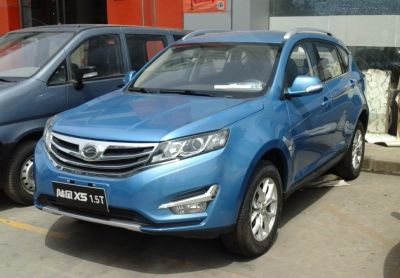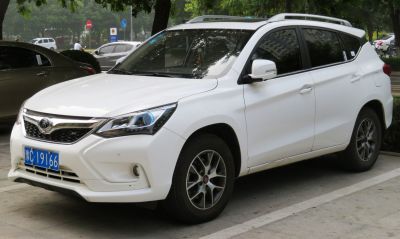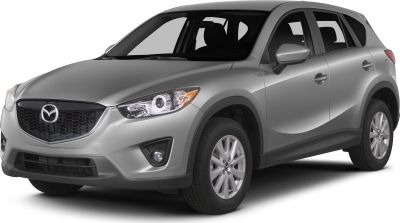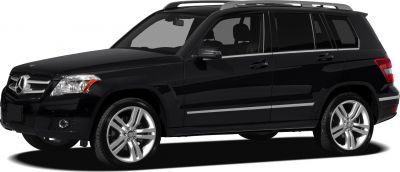 2010 Toyota Vanguard Dimensions, Size & Specs
2010 Toyota Vanguard Dimensions, Size & SpecsMeasurements of the 2010 Toyota Vanguard, engineered for optimal performance and comfort
| Dimensions | |
|---|---|
| Length: | 4570 mm179.9 in15.0 ft |
| Width: | 1855 mm73.0 in6.1 ft |
| Height: | 1685 mm66.3 in5.5 ft |
| Ground Clearance: | 190 mm7.5 in0.6 ft |
| Weight Specifications | |
| Curb Weight: | 1530-1660 kg3373-3660 lbs |
| Maximal permitted Weight: | 1905-1965 kg4200-4332 lbs |
| Tire Specifications | |
| Rims Sizes: | 17-inch rims:
|
| Tire Sizes: |
|
The Toyota Vanguard, produced from 2007 to 2013, is a midsize SUV that offers a blend of comfortable space and practical dimensions designed to suit both urban environments and light off-road use. The 2010 model year Vanguard measures 4570 mm (179.9 inches) in length, providing ample cabin and cargo room without being overly cumbersome for daily driving or parking in tight city spaces. With a width of 1855 mm (73.0 inches), the Vanguard delivers a spacious interior width conducive to comfortable seating for passengers while maintaining a stable road presence. Standing at a height of 1685 mm (66.3 inches), it offers elevated seating positions typical of SUVs, enhancing driver visibility and adding to the commanding driving stance many SUV buyers look for.
The vehicle’s curb weight ranges between 1530 and 1660 kg (3372 to 3660 lbs), reflecting variations depending on model trims and optional configurations, while the maximum permissible weight spans from 1905 to 1965 kg (4200 to 4333 lbs). This weight range ensures a balanced combination of sturdiness and performance, allowing the Vanguard to handle diverse driving conditions efficiently. A ground clearance of 190 mm (7.5 inches) contributes to its capability on uneven terrains, making it a practical option for those seeking a versatile SUV with occasional off-road functionality.
The Toyota Vanguard rides on rims sized 7J x 17 or 18 inches, paired with tire sizes 225/65 R17 or 235/55 R18, which strike a balance between comfort, road grip, and ruggedness. These tire and rim combinations support a smooth and controlled ride, improving both handling and safety. Overall, the Toyota Vanguard 2010 generation SUV is designed for buyers looking for a reliable midsize SUV with well-rounded dimensions, balanced weight distribution, and a practical ground clearance that collectively enhance driving confidence and passenger comfort.
Discover the standout features that make the 2010 Toyota Vanguard a leader in its class
Have a question? Please check our knowledgebase first.
The Toyota Vanguard 2010 generation measures 4570 mm (179.9 inches) in length, 1855 mm (73 inches) in width, and stands 1685 mm (66.3 inches) tall. These dimensions position it as a mid-sized SUV, providing a good balance between spacious interior room and manageable exterior size for urban driving and parking.
The curb weight of the Toyota Vanguard ranges from 1530 kg to 1660 kg (3372 to 3661 lbs), depending on the specific trim and equipment levels. Its maximum weight capacity, which includes passengers and cargo, lies between 1905 kg and 1965 kg (4200 to 4330 lbs). This weight range reflects its sturdy construction suitable for its SUV class.
The 2010 Toyota Vanguard offers a ride height or ground clearance of 190 mm (7.5 inches). This moderate clearance allows it to navigate rough terrain and road obstacles effectively while maintaining stable on-road handling. It's sufficient for common off-road conditions, including dirt roads and light trails, but not intended for extreme off-roading.
The Toyota Vanguard comes equipped with rims sized either 7J x 17 or 7J x 18 and tire sizes of 225/65 R17 or 235/55 R18. These tire dimensions offer a balance between comfort, grip, and performance, supporting stable road handling and aiding the vehicle's ride quality both on and off the pavement.
Yes, with its length of 4570 mm (179.9 inches), width of 1855 mm (73 inches), and height of 1685 mm (66.3 inches), the Toyota Vanguard comfortably fits into standard residential garages. Most garages, which typically offer around 2.4 to 2.7 meters (94 to 106 inches) in width and over 2 meters (79 inches) in height, provide ample space for the Vanguard while allowing room for opening doors and maneuvering.
The Toyota Vanguard, produced from 2007 to 2013, was effectively a larger, more upscale variation derived from the Toyota RAV4 but positioned differently rather than having a direct predecessor model name. However, compared to the RAV4 predecessor, the Vanguard was longer (4570 mm vs. roughly 4,500 mm), wider, and taller, targeting buyers needing more interior space and a more rugged look. Its design incorporated more SUV-oriented styling cues, a higher ride height, and a robust frame to appeal to markets favoring larger SUVs.
When compared to other mid-sized SUVs from the same era, the Toyota Vanguard offers competitive dimensions with a length of 4570 mm, width of 1855 mm, height of 1685 mm, and a curb weight between 1530 kg and 1660 kg. It is slightly heavier than some competitors like the Honda CR-V or Nissan X-Trail due to its rugged build and larger size, providing a more substantial presence on the road and enhanced stability. This added weight and size are reflected in its spacious interior and off-road capable design but may influence fuel efficiency slightly compared to lighter SUVs.
The Toyota Vanguard typically accommodates five to seven passengers, thanks to optional third-row seating in some configurations, which offers added flexibility for families or groups. Its versatile interior layout allows for considerable cargo space, especially when the rear seats are folded down. While exact cargo volume figures vary depending on seat configuration, the Vanguard prioritizes spaciousness and passenger comfort, making it suitable for daily use and road trips.
The 2010 Toyota Vanguard was commonly equipped with a choice of 2.4 to 3.5 liter gasoline engines, varying by market, including 4-cylinder and V6 configurations. Transmission options included both 5-speed automatic and 6-speed automatic transmissions, delivering smooth and responsive power delivery suitable for urban driving and moderate off-road capability. The engine choices influenced fuel economy and performance, allowing buyers to select trims matching their preferences.
The 2010 Toyota Vanguard featured a range of safety systems such as multiple airbags (front, side, and curtain), anti-lock braking system (ABS) with electronic brakeforce distribution (EBD), vehicle stability control (VSC), and traction control systems. These features were designed to protect occupants in the event of a collision and enhance driving stability under various road conditions, ensuring a safer driving experience typical of Toyota's reliability standards.
Discover similar sized cars.

| Production: | 2014-present |
|---|---|
| Model Year: | 2013 |
| Length: | 4568 mm179.8 in |
| Width: | 1855 mm73.0 in |
| Height: | 1710 mm67.3 in |

| Production: | 2016-2019 |
|---|---|
| Model Year: | 2016 |
| Length: | 4531 mm178.4 in |
| Width: | 2086 mm82.1 in |
| Height: | 1703 mm67.0 in |

| Production: | 2019-present |
|---|---|
| Model Year: | 2020 |
| Length: | 4544 mm178.9 in |
| Width: | 1831 mm72.1 in |
| Height: | 1713 mm67.4 in |

| Model Year: | 2015 |
|---|---|
| Length: | 4565 mm179.7 in |
| Width: | 1830 mm72.0 in |
| Height: | 1720 mm67.7 in |

| Production: | 2017-2021 |
|---|---|
| Model Year: | 2017 |
| Length: | 4550 mm179.1 in |
| Width: | 2116 mm83.3 in |
| Height: | 1680 mm66.1 in |

| Production: | 2015-2017 |
|---|---|
| Model Year: | 2015 |
| Length: | 4555 mm179.3 in |
| Width: | 2168 mm85.4 in |
| Height: | 1710 mm67.3 in |

| Production: | 2012-2015 |
|---|---|
| Model Year: | 2013 |
| Length: | 4555 mm179.3 in |
| Width: | 1840 mm72.4 in |
| Height: | 1710 mm67.3 in |

| Production: | 2009-2012 |
|---|---|
| Model Year: | 2008 |
| Length: | 4528 mm178.3 in |
| Width: | 2016 mm79.4 in |
| Height: | 1689-1699 mm66.5-66.9 in |
